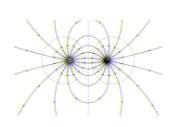The Doppler effect is described by the change that happens in the frequency of a wave which is corresponding to an observer who is moving relative to the wave source. Another name of the Doppler effect is the Doppler shift. An Australian physicist Christian Doppler stated the Doppler principle in the year 1842, after his invention, the name of this effect was decided.
There are many common examples of the doppler effect that we see in our day-to-day life like the doppler effect can be seen in the sound of altering the pitch when the sound of the bus horn approaches and withdraws from the observer. If we compare this with the frequency which is emitted, the professed frequency is always more during the approach, exactly the same as the instant of passing by and lesser during the downturn.
Doppler effect uses
There are so many uses of the doppler effect as many people believe that the doppler effect is only for the waves of sound. The fact is that the doppler effect works with all types of waves like light. Some of the applications of the Doppler effects are given below:
- It is used in the communication of satellites.
- It is useful in sirens, radar, and astronomy.
- Many medical centres use the doppler effect in the images of the reports.
- It is very useful in blood flow measurement and measuring vibrations.
- Doppler effect is used in the velocity of measuring profile and also in developmental biology.
- Audio
Limitations of the doppler effect
- The doppler effect is relevant only when the speed of that source of sound and observer is less than the speed of the sound.
- There should be the same motion of the source and the observer and must be on the straight line.
Different cases of the doppler effect
There are different causes of the doppler effect to give the proper understanding of the phenomena, Few of these are as follows:
- The first case is when both the viewer and the source are at the rest
Let’s consider S and O are the two positions of the source and the viewer. Let’s consider n as the frequency of the sound v as the speed of the sound. In one second, n waves formed by the source travel a distance SO = v
The wavelength is λ = v/n
- The second case is when the source goes away from the stationary viewer
Let’s suppose if the source moves in the direction of the viewer who is stable with speed vs, the outward frequency will become like this way:
n’ = (v/[v-(-vs)])n
Or, n’ = (v/[v+vs])n
As n′ < n, the pitch tends to get lower.
- The third case is when the source is at rest and the viewer is moving away
Let S and O show the exact position of the source and viewer.
The source S produces n waves which are calculated at per second consist of wavelength λ = v/ n.
Suppose point A such that OA has n waves that cross the ear of the viewer in just one second i.e. when first was at point A, the nth wave will reach O, where the viewer is placed.
Hence, the outward frequency of sound is
n′ = ((v-v0)/v) n
- The fourth case is when the observer goes in the same direction of the stationary source
Let’s consider the viewer is going towards the stationary source with velocity vo. After one second the observer will reach the point O′ such that OO′ = vo. The no. of waves that cross the viewer will be n waves in the distance OA in addition to the no. of waves in the distance OO′ which is equal to vo/λ.
Hence, the outward frequency of sound is
n′ = n + vo/ λ = n +(v0/v) n
therefore, n′ = ((v+v0)/v) n
As n′ > n, the pitch of the sound appears to increase.
When the observer moves away from the stationary source
n′ = [v +(-v0)/v] n
n′ = (v-vo / v )n
As n′ < n, the area of sound seems to decline.
Note: If the source and the viewer goes in the same path, then the equation will change to this and, outward frequency is n′ = (v-v0 / v-vs )n
Let’s visualise that the wind is moving with speed W in the path of circulation of sound, the
outward frequency is n′ = ([v+W-v0]/ [v+W-vs]) n.
Conclusion
An Australian physician invented the Doppler effect in the year of 1845. The doppler effect is seen in our day-to-day life like in blood flow management, measuring vibrations, audio, developmental biology, medical reports, etc. there are a few limitations of the doppler effect like the doppler effect is relevant only when the speed of that source of sound and observer is less than the speed of the sound. There are different cases in the doppler effect that shows the difference of perspective of the viewer.
 Profile
Profile Settings
Settings Refer your friends
Refer your friends Sign out
Sign out







